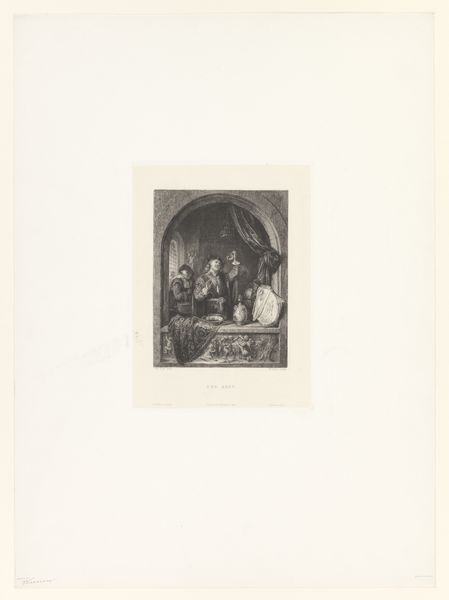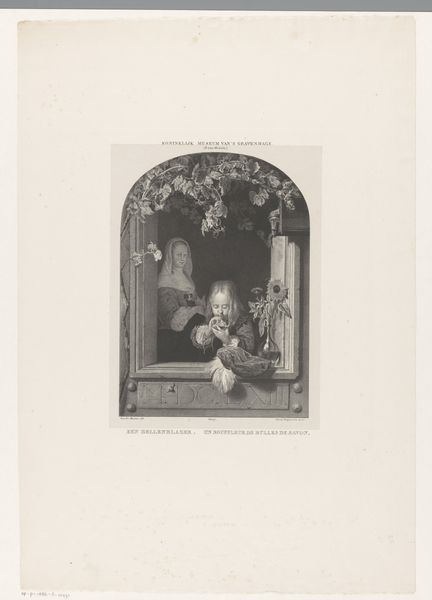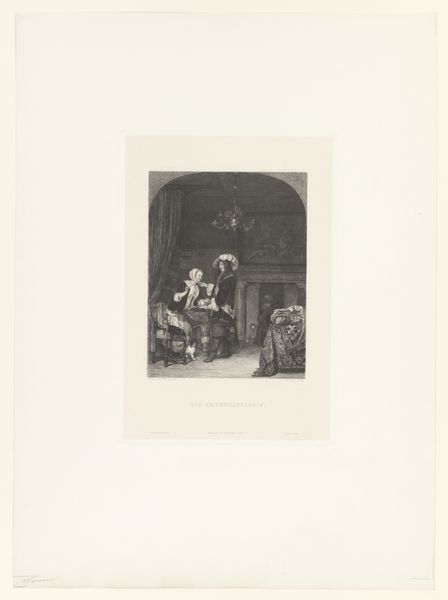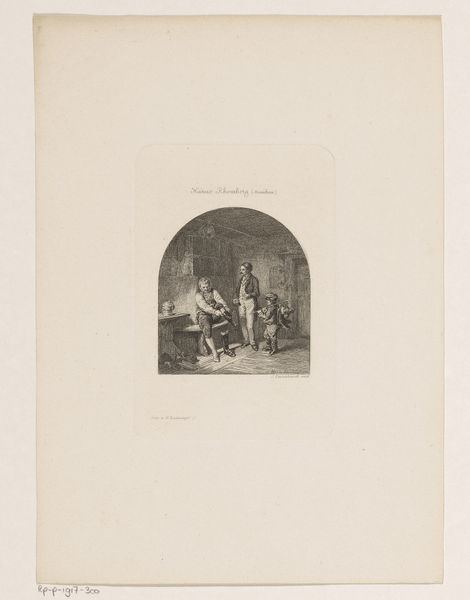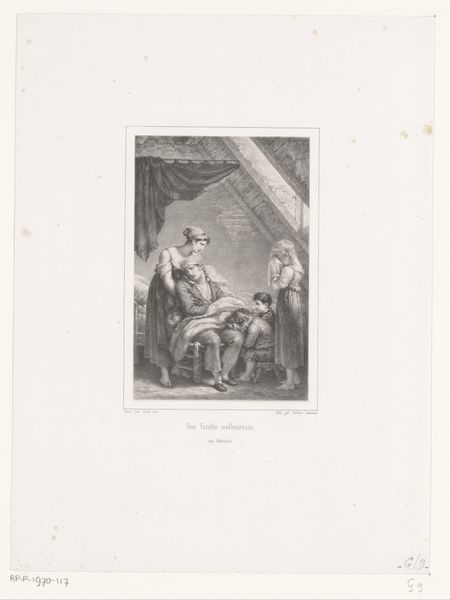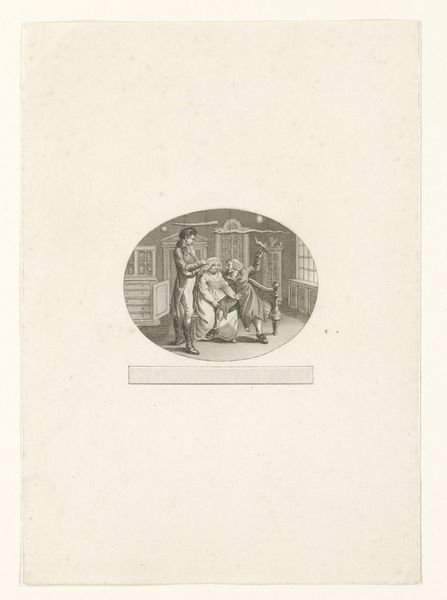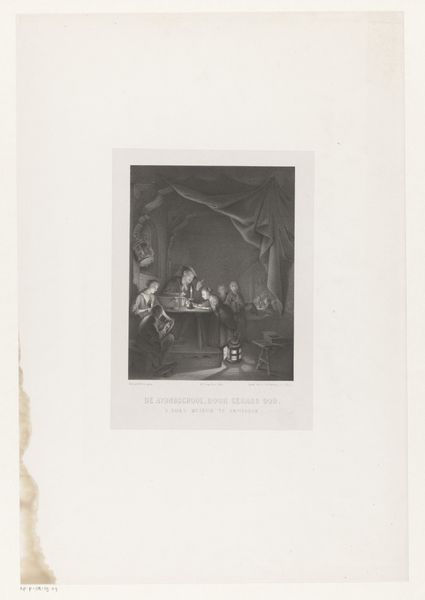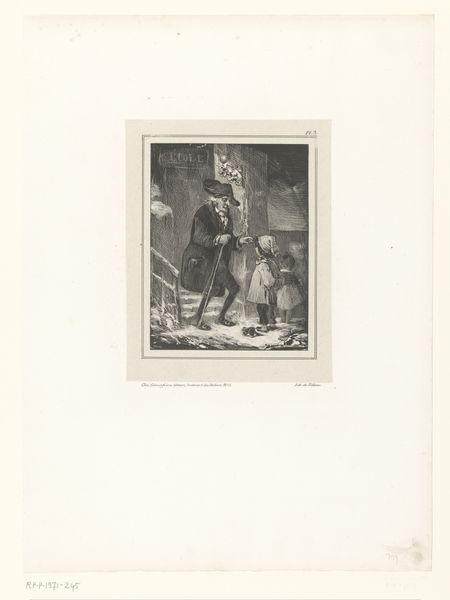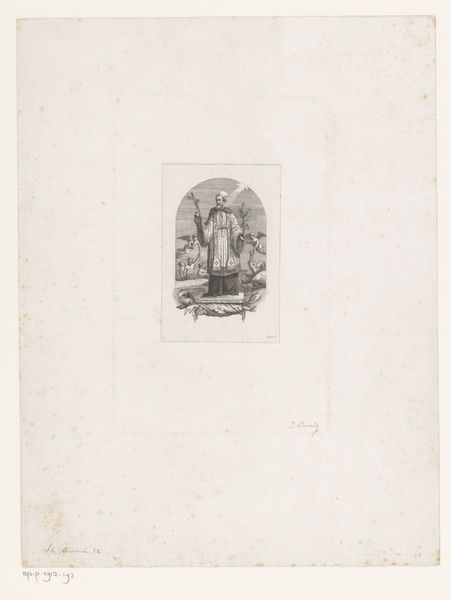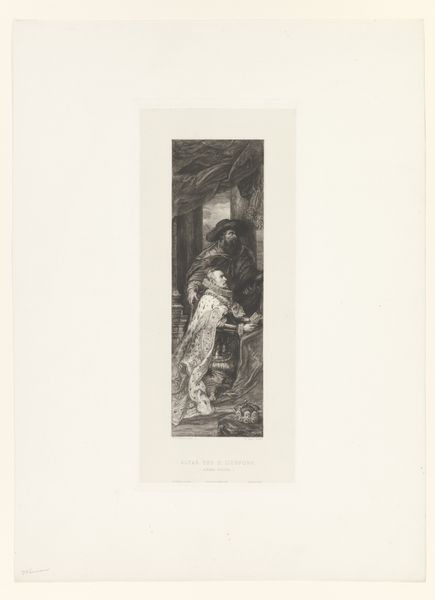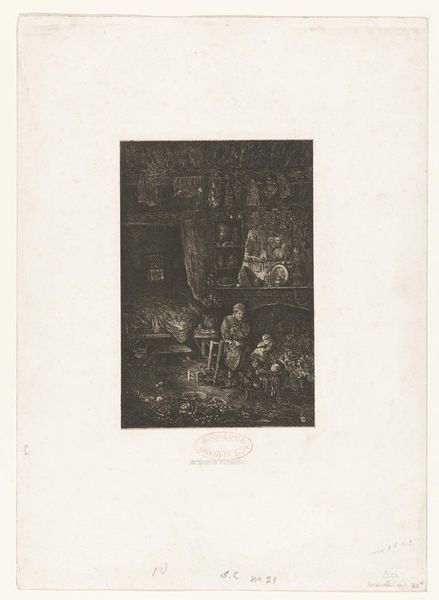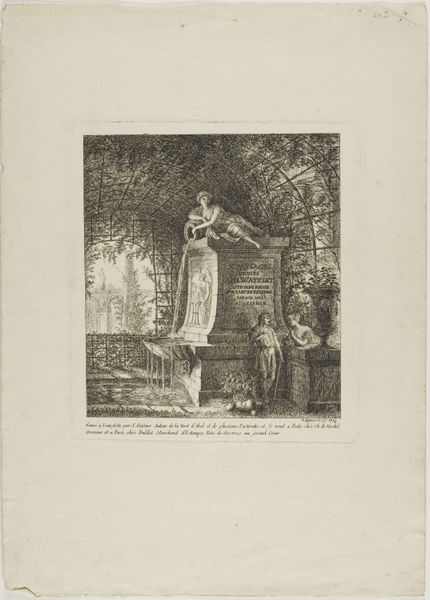
Herman de Ruiter eist het slot van de slotvoogd op, 1570 1832 - 1834
0:00
0:00
print, paper, engraving
#
narrative-art
# print
#
paper
#
romanticism
#
genre-painting
#
history-painting
#
engraving
Dimensions: height 237 mm, width 145 mm
Copyright: Rijks Museum: Open Domain
Editor: We're looking at an engraving on paper titled "Herman de Ruiter eist het slot van de slotvoogd op, 1570," or "Herman de Ruiter demands the castle from the castellan, 1570," created between 1832 and 1834 by Jan Baptist Tetar van Elven. The scene, framed like a window, feels really theatrical to me – almost staged. What catches your eye about this print? Curator: It has that distinct whiff of Romanticism about it, doesn’t it? It is dramatic – and yes, almost theatrically so. For me, it is like a carefully constructed dreamscape, more about evoking emotion than recounting historical fact, right? What do we see? This is a portrayal, not a report. How do we interpret those tensions between fact and fancy? Notice how the light pools around Herman de Ruiter, emphasizing his defiance, the other figures remain rather shadowy. The level of detail achieved by the artist is astounding given its age. Editor: That tension makes sense. It also pulls my eye to the figure in the far right looking apprehensive and crouched near what seems to be a fireplace? How would you describe his affect? Curator: Good question. His hunched posture suggests fear or perhaps guilt, wouldn’t you say? Maybe Tetar van Elven is nudging us to think about the psychological weight of power? It’s almost as though the fireplace – typically a symbol of warmth and domesticity – has become a visual echo of his internal turmoil. What about you? Does that interpretation ring true, or do you see it differently? Editor: I think that makes perfect sense! It is as if there is both external and internal struggle happening at once. I had not considered the symbolism of the fireplace until you had mentioned that just now! Thanks! Curator: And thanks to you for pointing out the staging - it's all in those choices! Art, much like history, always tells a story from a particular viewpoint, doesn't it?
Comments
No comments
Be the first to comment and join the conversation on the ultimate creative platform.


